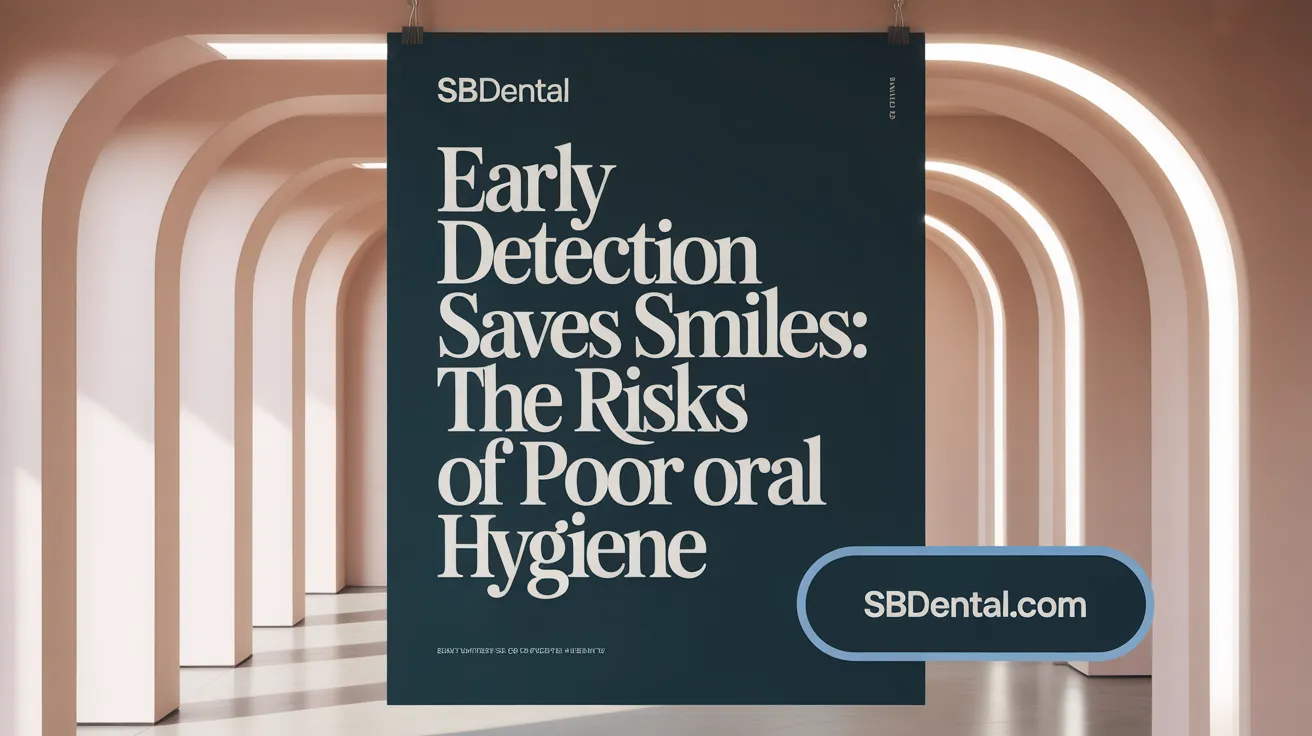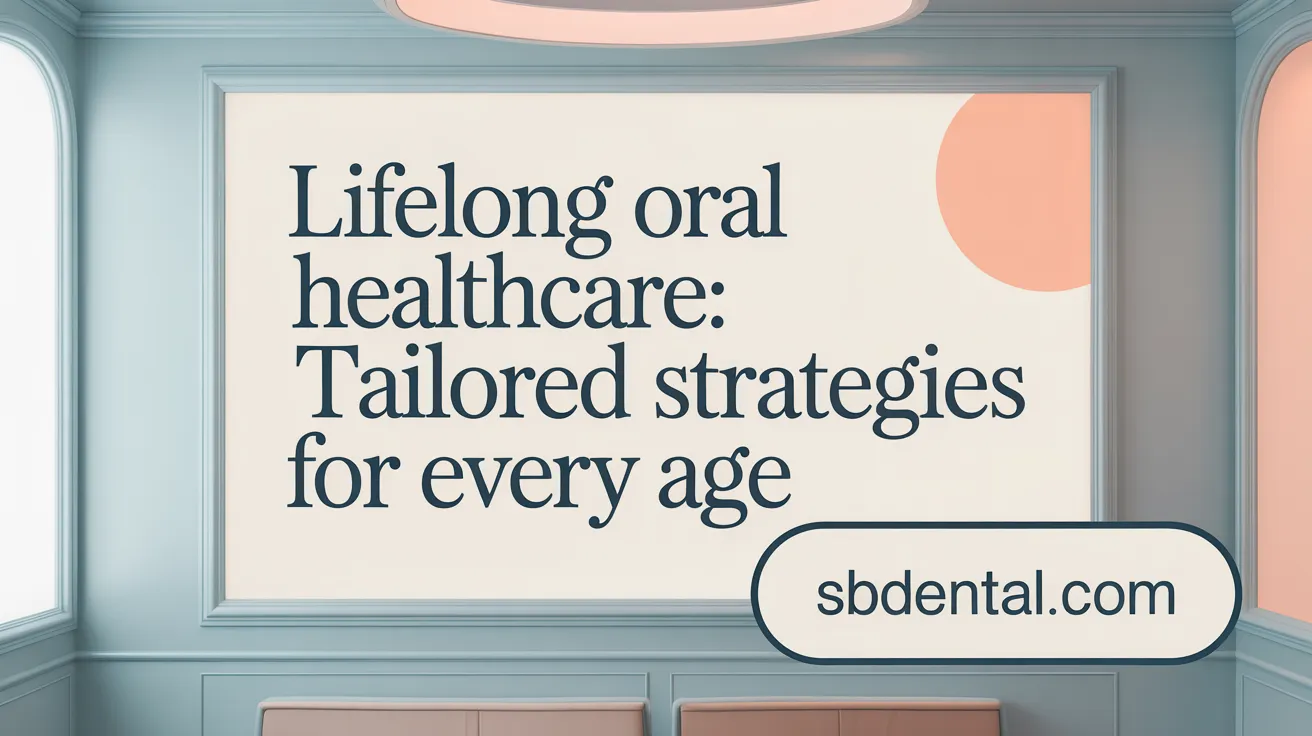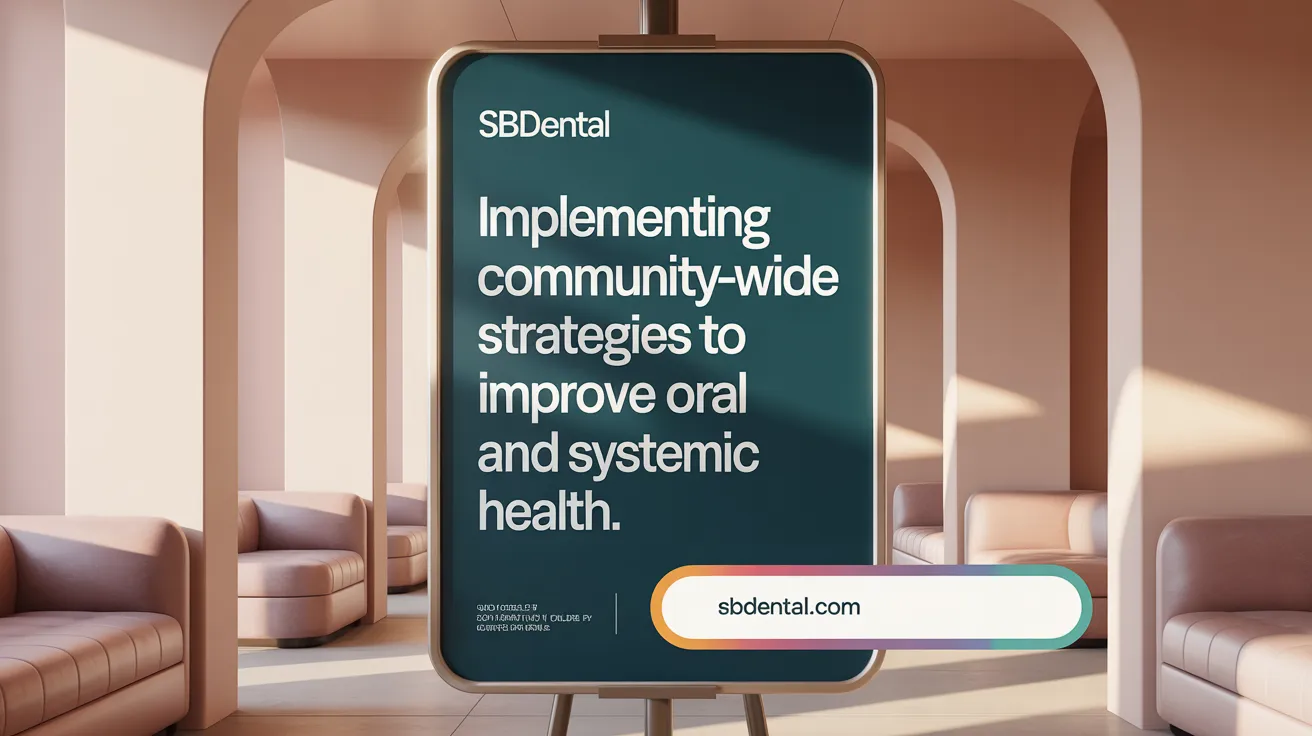The Vital Link Between Mouth and Body
Oral health is more than just a bright smile—it serves as a critical gateway to your overall health. Understanding the deep connections between the health of your mouth and general well-being can drive better care choices leading to improved quality of life. This article explores how maintaining oral hygiene supports systemic health, impacts chronic diseases, and contributes to mental and physical wellness, alongside practical guidance and public health strategies for fostering oral and general health across all life stages.
Understanding the Complex Connection Between Oral and General Health

What is the connection between oral health and overall health?
The link between oral health and overall health is extensive and intricate. Poor oral hygiene, especially unresolved gum disease or periodontitis, has been associated with several serious systemic conditions. For instance, bacteria from the mouth can enter the bloodstream through inflamed gums, leading to infections such as endocarditis, which affects the heart. Chronic inflammation caused by gum disease is also believed to play a significant role in cardiovascular diseases, including clogged arteries and stroke.
Moreover, oral health has a powerful impact on conditions like diabetes. Evidence shows a bidirectional relationship whereby periodontal disease can make blood sugar control more difficult, and poor management of diabetes can, in turn, worsen gum health. Pregnancy complications related to oral health, like premature birth and low birth weight, have been linked to maternal gum disease, highlighting the importance of oral health during pregnancy.
Respiratory illnesses, such as pneumonia and bronchitis, can develop when bacteria from the mouth are aspirated into the lungs. Cognitive decline and neurodegenerative diseases like Alzheimer's have also been associated with chronic oral infections, underscoring the broader systemic implications.
Shared risk factors—such as tobacco use, poor diet high in sugars, stress, and obesity—contribute to both oral and systemic diseases. Addressing these common risk factors through integrated healthcare strategies, including regular dental visits and good oral hygiene practices, can significantly reduce health risks.
In essence, good oral health is vital not just for maintaining a bright smile but also for supporting overall health, preventing disease, and enhancing quality of life. The evidence underscores that dental care is a crucial element of comprehensive healthcare, emphasizing the importance of early intervention, preventive practices, and holistic health approaches.
Best Practices for Effective Oral Hygiene Care
What are the best practices for maintaining good oral hygiene?
Maintaining excellent oral hygiene best practices is essential for healthy teeth and gums, and it can help prevent multiple dental and health problems. The cornerstone of good oral care involves brushing teeth twice daily with fluoride toothpaste. Using a soft-bristled toothbrush, position it at a 45-degree angle toward the gums and employ gentle, circular motions. This technique ensures thorough cleaning of all tooth surfaces and prevents damage to your gums.
In addition to brushing, daily flossing or using interdental cleaning tools such as interdental brushes or water flossers is crucial. These devices help remove plaque and food debris from between teeth and beneath the gumline where a toothbrush can't reach effectively. This practice reduces the risk of cavities and gum disease.
Cleaning the tongue with a scraper or the back of a toothbrush can significantly reduce bacteria responsible for bad breath and oral infections. Using an antibacterial, alcohol-free mouthwash daily can further decrease harmful bacteria and plaque buildup.
A healthy diet low in sugary foods and drinks supports oral health by limiting the food sources that feed cavity-causing bacteria. Drinking fluoridated water not only helps strengthen enamel but also promotes overall oral health.
Regular dental visits, ideally every six months, allow professional cleaning and early intervention for problems such as tartar buildup, cavities, or periodontal disease. For individuals at higher risk, like smokers or those with medical conditions, more frequent checkups may be recommended.
Lastly, avoiding tobacco use and moderating alcohol intake can significantly reduce risks of oral cancers and other oral health issues. Following these best practices builds a strong foundation for lifelong dental health, supporting overall well-being.
Health Risks of Poor Oral Hygiene and the Importance of Early Detection

What oral health risks are associated with poor oral hygiene?
Poor oral hygiene significantly elevates the chances of developing multiple dental issues, such as tooth decay prevention, which manifests as cavities, and gum diseases like gingivitis and periodontitis. If these conditions are not addressed promptly, they can progress to tooth loss and severe infections, including mouth sores. Moreover, bacteria and inflammation from untreated oral problems can spill over into the bloodstream or respiratory pathways, increasing systemic health risks.
Research links poor oral health to serious systemic conditions, including cardiovascular diseases, stroke, and complications of diabetes. The inflammatory response caused by gum disease has been associated with heightened risks of Alzheimer’s disease and certain cancers, especially oral and throat cancers associated with the human papillomavirus (HPV vaccination and throat cancer prevention). Pregnant women with poor oral hygiene may encounter risks such as pregnancy complications related to oral health like preterm birth and low birth weight. Overall, neglecting oral health doesn't just affect the mouth—it impacts oral health and overall health and well-being.
What is the significance of early detection and management of oral health problems?
Early detection of oral health problems plays a vital role in preventing the escalation of problems like cavities, gum disease, and oral cancer. Regular dental checkups, ideally every six months, allow dentists to identify early signs of issues through visual examinations and advanced diagnostic tools such as X-rays. Identifying problems at an early stage enables timely interventions, which are less invasive and more cost-effective.
Detection of conditions like oral cancer at an early stage markedly improves prognosis, as treatments are more effective and less extensive. Additionally, managing oral diseases early helps preserve natural teeth, maintain proper function, and prevent complications that could involve systemic health, including increased risk of heart disease and uncontrolled diabetes.
This proactive approach in dental care is facilitated by technological advances that enhance early diagnosis, such as intraoral cameras and sophisticated screening tools. Overall, early detection and management not only protect oral health but also contribute significantly to overall health, reducing both personal suffering and healthcare costs.
Diet, Lifestyle, and Their Impact on Oral and General Health

How do diet and lifestyle choices support oral health?
Diet and lifestyle choices are vital to maintaining healthy teeth, gums, and tissues, which in turn support overall health. Good dietary habits help reduce the risk of dental decay and gum disease by influencing plaque formation and tissue strength.
Limiting intake of free sugars, especially between meals, is essential because bacteria in the mouth feed on sugars, producing acids that erode enamel and cause cavities. Consuming foods like dairy products, fruits, and vegetables provides protective nutrients. Dairy, rich in calcium and phosphorus, helps remineralize enamel and strengthen teeth. Fruits and vegetables stimulate saliva production, which naturally neutralizes acids and rinses away food particles.
Adequate hydration, especially with fluoridated water, supports saliva flow, which is crucial for oral cleansing and neutralizing harmful acids. Proper hydration also helps prevent dry mouth, a condition that increases infection risk.
Avoiding tobacco use significantly reduces the chance of periodontal disease and oral cancers. Moderating alcohol intake further diminishes these risks and promotes better oral tissue health.
Preventive practices like consistent brushing with fluoride toothpaste and routine dental visits complement healthy eating habits. Together, these lifestyle choices help preserve oral tissues, prevent disease, and contribute to overall well-being.
In summary, a balanced diet low in sugars, rich in protective foods, adequate hydration, and avoiding harmful habits are interconnected strategies that support oral and systemic health, highlighting the importance of holistic health management.
Oral Health Across Lifespan: Tailored Care for Children, Pregnant Women, and Older Adults

What oral health issues are specific to different age groups such as children, pregnant women, and older adults?
Oral health needs and challenges vary considerably across different stages of life. Children are especially vulnerable to cavities and developmental issues that can affect their long-term dental health. Common problems include early childhood caries, delayed eruption of teeth, and misalignment, which can influence speech, eating, and self-esteem. Starting dental visits early, ideally by the child's first birthday, and using fluoride varnish or sealants can help prevent cavities (Oral Health Tips for Children).
Pregnant women often encounter unique oral health concerns driven by hormonal shifts. For example, pregnancy gingivitis is common, characterized by swollen, bleeding gums, which, if untreated, can lead to more serious periodontal disease. Managing oral hygiene and seeking dental care before and during pregnancy help minimize risks such as premature birth and low birth weight for the baby. These conditions highlight the importance of routine dental visits and specialized care during pregnancy (Oral health during pregnancy).
Older adults face an increased prevalence of oral health problems like tooth loss, receding gums, dry mouth, and oral cancers. These issues are compounded by physical or cognitive limitations, making daily oral hygiene more challenging. Dry mouth, often due to medications or medical conditions, heightens the risk of root decay and mouth infections. Regular dental checkups and proper care for dentures are essential to prevent infections and maintain overall health. Moreover, the risk of oral cancer increases with age, emphasizing the need for routine screenings (Oral Health for Older Adults).
Maintaining good oral hygiene practices—such as brushing twice daily with fluoride toothpaste, flossing, and visiting the dentist regularly—remains vital throughout all ages. Tailored care approaches, including age-appropriate tools and preventive services, can significantly improve health outcomes and quality of life across the lifespan (Oral health and overall health).
Public Health Strategies and Evidence-Based Approaches to Enhance Oral and General Health
 Public health initiatives play a crucial role in improving both oral health and overall health outcomes across populations. Strategies such as community water fluoridation significantly reduce the incidence of dental caries by providing consistent fluoride exposure, strengthening enamel, and lowering treatment costs. School-based dental programs, including sealant applications and fluoride varnish programs, help prevent childhood cavities and promote lifelong oral health habits.
Public health initiatives play a crucial role in improving both oral health and overall health outcomes across populations. Strategies such as community water fluoridation significantly reduce the incidence of dental caries by providing consistent fluoride exposure, strengthening enamel, and lowering treatment costs. School-based dental programs, including sealant applications and fluoride varnish programs, help prevent childhood cavities and promote lifelong oral health habits.
Health promotion campaigns focused on education about proper oral hygiene, diet, and the risks associated with tobacco and excessive alcohol use are vital. These programs aim to increase awareness and encourage healthier behaviors that directly impact oral health, such as brushing twice daily, flossing, and reducing sugar intake.
Communities can also improve access to preventive and restorative dental services through expanding public clinics, mobile dental units, and policies that support trained dental public health workers. Addressing social determinants—like transportation, socioeconomic barriers, and health literacy—is essential to ensure equitable access.
Integrating oral health with general health care and behavioral health services enhances early detection and management of oral disease. For example, routine medical checkups can include screenings for oral cancer or periodontal disease, with referrals to dental professionals as needed.
Vaccination efforts, such as HPV vaccination, contribute to preventing HPV-related oral cancers. Tobacco control policies, including smoking bans and cessation programs, also have a direct impact on reducing risks of oral cancers and periodontal disease.
Educational and policy supports that promote healthier environments and behaviors, combined with community engagement, form a comprehensive approach to disease prevention. These efforts not only diminish disparities but also foster healthier communities with reduced burden from preventable oral and systemic diseases.
| Strategy | Implementation Example | Impact | Additional Notes |
|---|---|---|---|
| Water fluoridation | Managed community water systems | Decreases cavities | Supported globally, cost-effective |
| School-based programs | Sealant applications, fluoride varnish | Prevents childhood caries | Targets vulnerable populations |
| Public education campaigns | Oral hygiene, nutrition, tobacco cessation | Changes behaviors | Enhances awareness and early detection |
| Access expansion | Mobile clinics, policy support for professionals | Increases preventive care | Addresses health disparities |
| Integration with healthcare | Screenings during medical visits | Improves early diagnosis | Links oral and systemic health |
| Vaccination & tobacco control | HPV vaccines, smoke-free laws | Reduces oral cancer risks | Policy-driven and community-supported |
Through these multifaceted efforts, public health initiatives significantly contribute to reducing the burden of oral diseases while supporting overall health and health equity.
Sustaining Oral Health for Lifelong Wellness
Maintaining excellent oral hygiene is a gateway to better overall health, influencing everything from cardiovascular function to mental well-being. By adopting evidence-based oral care routines, supporting healthy lifestyle choices, and engaging in regular dental visits, individuals can mitigate risks of oral and systemic diseases. Tailoring care to life stages ensures vulnerable populations receive the attention they need, while community initiatives promote equitable access and health literacy. Ultimately, embracing oral health as an integral part of general health empowers us to lead healthier, happier lives with confident smiles and resilient bodies.
